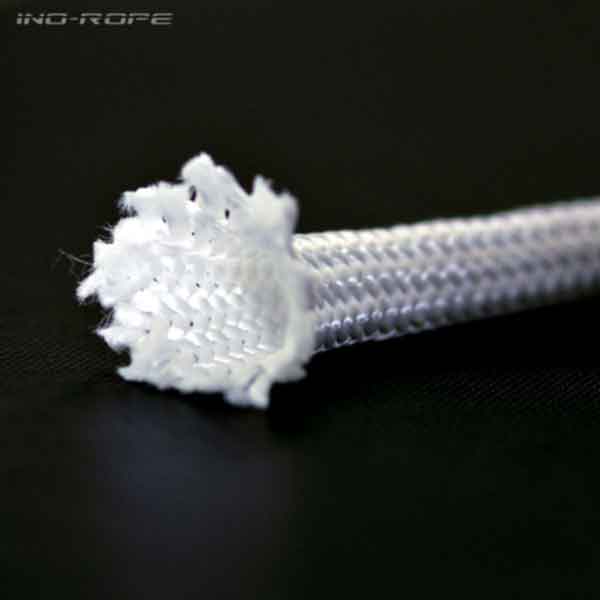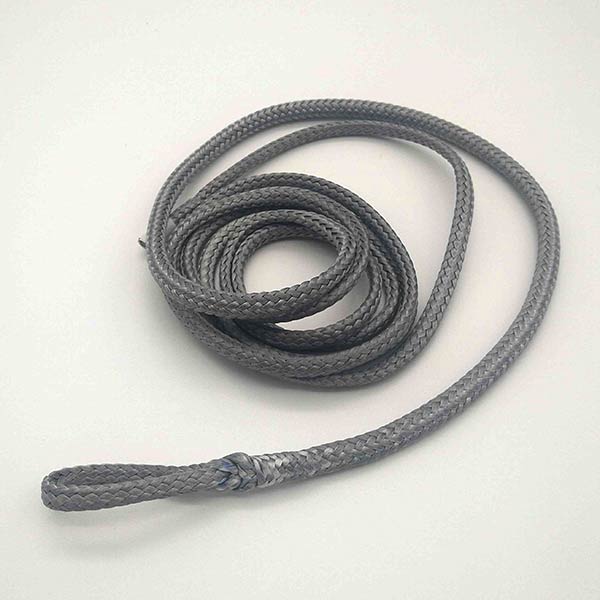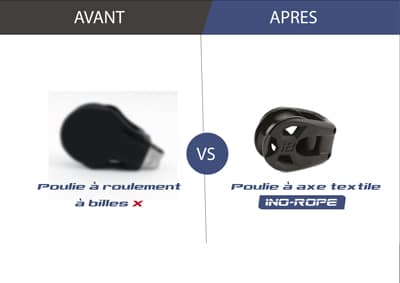
Install and check guard lines
Installation and checking the Jacklines
How to install Jacklines (fixing points, length, tension, etc.) ? Which points need checking to verify their condition of wear? Is there an alternative to the conventional polyester strap? This file has to be read carefully; your life depends on it !
Jacklines: what we used to do
Among the ropes found on a sailing boat, Jacklines often suffer from great negligence. In order to be fully efficient, they need to be cleverly installed, regularly checked and correctly maintained. Unfortunately, this is rarely the case. These are the most frequent mistakes (editor’s note: any resemblance with existing persons or those who have existed is purely coincidental).
Location on the deck
Most of the time, Jacklines are laid out on catwalks and pass on the outside of the shrouds. It is indeed the easiest solution, as this is the most discrete position where they get in the way the least (no deck fittings or ropes). This easy solution is, however, dramatic in terms of safety.
Length
The length of Jacklines is generally more or less equivalent to that of the boat. The attachment points that are the most obvious are, in effect, the mooring cleats forward and aft.
Tension
The tension of Jacklines is an important element to take into account. Yet, this parameter is often neglected and their tension is established more or less randomly. Besides, the conventional system with shackles does not enable the tension to be adjusted when the Jacklines are laid out.
Care
The maintenance of Jacklines is, unfortunately, hardly a reflex for leisure boaters or racers. To tell the truth, many of them have no idea of their wear. So, it is not uncommon to see Jacklines on board that are completely useless and that serve virtually no purpose, except perhaps, for wrongly giving one a clear conscience!
Our advice for increased safety
After reading the first section of this file, you probably feel weighed down by guilt. Lift your head up and get to work. You will find, hereafter, all the recommendations to set up Jacklines, according to elementary safety rules. Here are also some tips to be able to recognise signs of wear.
Location on the deck
Passing Jacklines on the outside of the shrouds is absurd because if someone falls over board, it is the best way for them to be dragged into the water. Thus, it is advised to pass them on the inside of the shrouds. In case of imbalance, there is a much better chance of remaining on board when the safety lanyard tenses. In any event, circulating on the inside of the shrouds is much wiser, as one is less exposed to waves.
Pass the Jacklines over ropes and fitting elements, otherwise you will have to unhook yourself frequently to keep moving.
Length
It is useless and even dangerous to have Jacklines that are too long. The length of the safety lanyard allows one to reach the bow or the aft of the cockpit. Forward: the inner stay chain plate makes a good fixing point, solid and well-centred. The best solution is to pass the Jacklines along the roof and to hook them at the same level as the cockpit control clutches, even if this requires installing a specific chain plate, if necessary.
The Jacklines placed on the inside of the shrouds, along the roof, enable one to hook on from the access hatch, before even going out into the cockpit.
Tension
The Jacklines must be very taut, especially if they are made of polyester, as this fibre is elastic. When pulling on the Jackline, like with the string of a bow, the offset sideways must not go over approximately 20 cm. Tension must not be excessive either because you need to be able to connect the snap shackle easily. In some cases, this not possible, like for example when The Jackline is too flush on the deck.
To prevent the Jackline from banging on the deck because of the wind, twirl it once or twice: a twisted strap is noiseless!
Care
Several points need regular checking. Test the strength of its seams by pulling on it manually. If they tear, do not throw away your Jackline, but have it repaired by your favourite sail maker! Check the state of the strap at the attachment points and all the chafing areas (shrouds for example). Pay particular attention to the side of the strap that is in contact with the deck, especially if it is equipped with aggressive non-skid coating.
Winter the Jacklines, instead of letting them go green. To clean them, soak them in warm water with a laundry softener.
Ino-Rope Jacklines made of Dyneema® straps
Polyester straps are not the only solution for Jacklines! Ino-Rope provides custom Jacklines made of Dyneema® straps, which are more resistant, more durable and more practical.
Resistance and lifespan
The Dyneema® fibre provides far superior resistance to chafing than polyester, which wears out quite quickly by rubbing against the deck. The seams of polyester Jacklines are also fragile. The Jacklines made of Dyneema® straps do not have this weakness because the seams are replaced by splices, which are much more solid.
Easy to install
The two spliced loops at each end enable the Jacklines to be easily attached, by tying a lark’s head knot on one side (around each chain plate, for example) and a lashing on the other (as an option). The lashing (video tutorial here) is a solid and easy to make textile connection, which enables one to adjust the tension of the Jacklines.
Colour for increased visibility
White Jacklines are discreet but not very visible, especially at night! Ino-Rope provides coloured Jacklines (several colours available). Coating (video tutorial here) does not only bring colour: it is also an extra protection against UVs and chafing, which lengthens the lifespan of Jacklines.
To avoid having to fumble in the dark, looking for the Jackline, choose the fluorescent yellow coating, a must for night navigation!
-

-
 Dyneema® lashing, Ready-to-use (with splice)11,80 € – 17,77 € TTC
Dyneema® lashing, Ready-to-use (with splice)11,80 € – 17,77 € TTC







